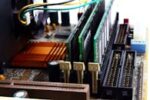Just a few years ago, artificial intelligence (AI) seemed like something reserved for tech labs, science fiction, or large corporations. Fast forward to 2025, and AI is quietly embedded in many of the devices we use daily — from the phones in our pockets to the appliances in our kitchens. But what does this shift actually mean for how we live, work, and interact with the world?
Let’s break it down.
🤖 What Are AI-Powered Devices?
AI-powered devices are everyday tools enhanced with machine learning or intelligent software. This means they can “learn” from user behaviour, adapt to preferences, automate tasks, and even make recommendations — all with minimal human input.
Common examples include:
- Smartphones with AI-enhanced cameras and voice assistants
- Smart TVs that suggest shows based on your viewing habits
- Washing machines that detect fabric types and adjust settings automatically
- Fitness trackers that monitor your sleep and activity to offer personalised health insights
🏡 In the Home: Smarter Living
Smart homes are no longer a futuristic dream — they’re becoming the norm. AI helps power systems like:
- Voice assistants (Alexa, Siri, Google Assistant) that control lights, music, and reminders
- Thermostats that learn your routine and adjust temperatures to save energy
- Robot vacuums that map your home and optimise cleaning routes
These features make daily life more convenient, efficient, and sometimes even more sustainable.
🧠 In Our Routines: Personalised Everything
AI learns from your preferences — the more you use a device, the smarter it gets. For example:
- Your phone might predict who you’re about to call
- Your music app creates custom playlists based on your mood
- Your smartwatch might prompt you to move after prolonged inactivity
This level of personalisation can enhance user experience, helping us manage time, health, and tasks better than ever before.
🚗 On the Road: Smarter Mobility
Vehicles today are increasingly driven by AI — literally and figuratively. Features like:
- Lane assist
- Emergency braking
- Traffic-aware cruise control
…all use AI to make driving safer and less stressful.
We’re also inching closer to self-driving cars becoming a reality, especially in controlled environments and delivery logistics.
⚠️ The Flip Side: What to Watch Out For
While AI offers convenience, it also raises concerns around:
- Privacy: Devices collecting personal data can be misused if not properly secured.
- Job automation: Some fear that AI could replace human roles in certain industries.
- Overdependence: Relying too heavily on AI could reduce critical thinking or hands-on skills.
It’s important to balance convenience with awareness and stay informed about how your devices collect and use your data.
🌍 The Bigger Picture
The rise of AI-powered devices isn’t just about tech — it’s about how we interact with the world. These tools are helping us live smarter, healthier, and more connected lives. But they also remind us to be thoughtful about how we integrate technology into our routines.
In the end, the goal of AI is not to replace us, but to enhance the way we live — and that’s a future worth being part of.




